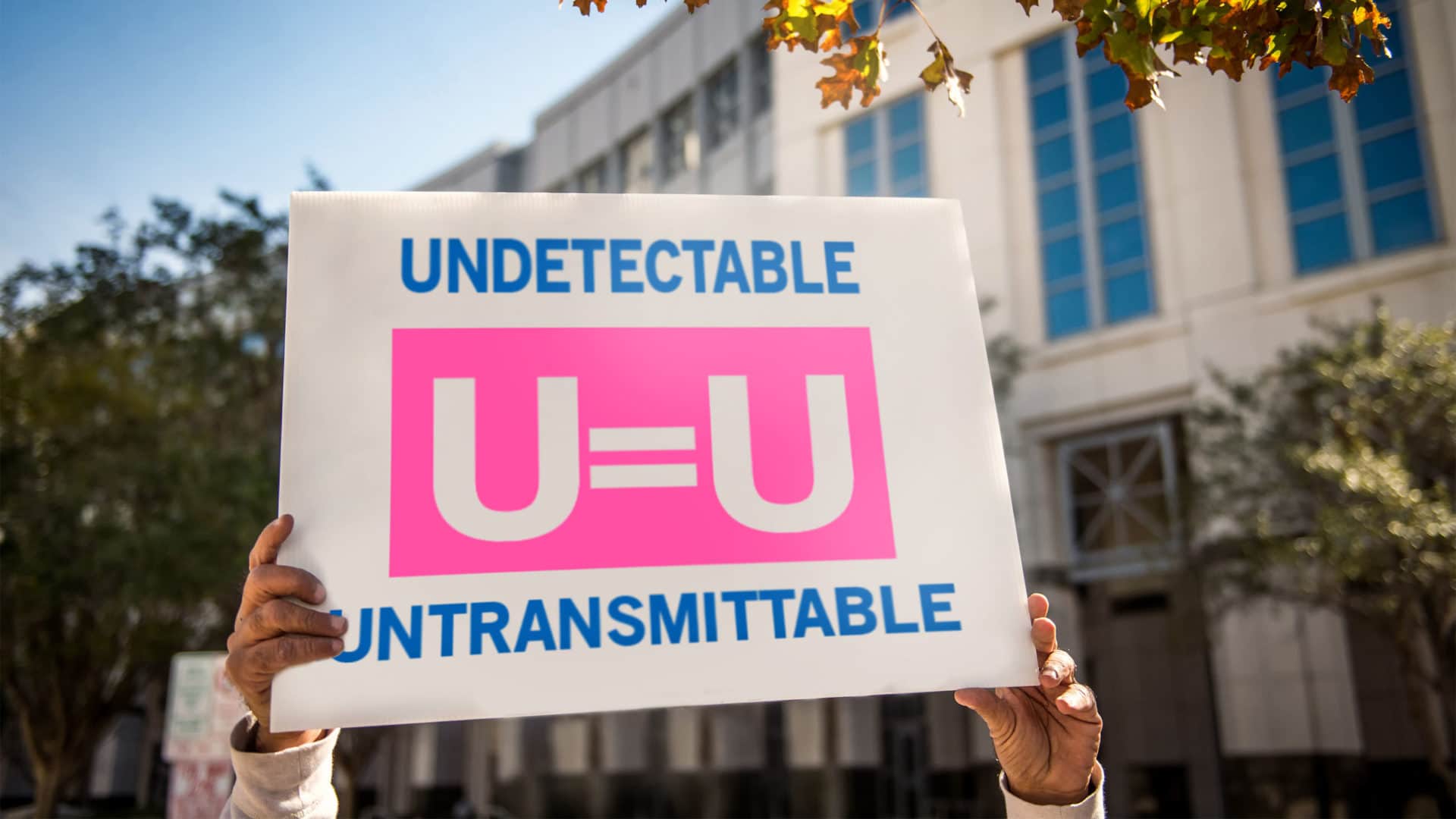STDs are Rising Among Teens. Can Video Games Help?
Perhaps for no group does the specter of sexually transmitted diseases loom larger than it does for young people. At the beginning of the last decade, youth aged 15 to 24 accounted for half of new STD cases in the United States, though they made up just 27 percent of the sexually active population. An estimated 44 percent of all adolescents and young adults living with HIV/AIDS were unaware of their status. And by many accounts, the problem seemed to only be getting worse: Between 2016 and 2017, rates of chlamydia, gonorrhea, and syphilis each climbed by between 7 and 16 percent among U.S. adolescents.
Public health experts say these worrying trends likely result from a number of individual and systemic factors, including stigma, inadequate access to clinics, and a lack of appropriate sexual health education. In response, a growing cadre of researchers has begun to explore an alternative, technology-based approach to educating young people about healthy sex practices: video games.
The push to gamify sex education is part of a broader movement to deploy video games in targeting health issues ranging from depression to tobacco use. Proponents tout the games as cheaper and more accessible alternatives to the traditional small-group discussions typically held in schools and clinics. And while relatively few randomized controlled trials — considered the gold standard for research — have been performed to test the efficacy of game-based interventions in sex education, the ones that have suggest virtual sexual health education, and in particular video games, could be at least as effective as traditional methods in promoting things like condom use and STD testing.
In the past, the games’ developers — based largely in academia — have struggled to get their tools out of the research lab and into classrooms. They’ve been hampered by, among other things, funding constraints and a patchwork of state educational regulations. But the Covid-19 pandemic has accelerated the pace at which many of the country’s middle and high schools are moving toward digital learning, which has given some researchers hope that sex education curricula, and the age-old strategies for delivering it, are ripe for change.
For more than a decade, Lynn Fiellin, a professor of medicine at Yale University, has been at the forefront of the push to bring gaming into sex education. Fiellin is the founding director of play2PREVENT, a laboratory at the Yale Center for Health and Learning Games that develops video games and digital technology focused on improving the health of adolescents. Between 2012 and 2013, she and her colleagues developed a game called PlayForward, designed to improve teenagers’ knowledge of STDs and promote healthy sexual practices in general.
Like other games that play2PREVENT has developed, PlayForward is an interactive, story-driven role-playing experience. The user must navigate their avatar through a gauntlet of social situations: They might be asked to give advice to a classmate, talk about condom use with their partner, or get tested for STDs at a virtual clinic.
Although its storylines are original, PlayForward is conceptually similar to other sex education games developed in recent years, including interventions created by researchers at the University of Texas School of Public Health and by a collaboration involving researchers at George Washington University. A driving force behind all of these efforts is the idea that digital technologies, and specifically video games, by nature of their ability to engage with teenagers in a familiar medium, can be more effective than educational pamphlets or lectures as agents of behavioral change.
The evidence amassed so far offers some support for that idea. In one randomized trial involving 333 subjects aged 11 to 14, participants who played PlayForward twice a week for six weeks showed improved sexual health knowledge and attitudes compared with a control group. They were more likely, for instance, to believe that condoms should always be used during intercourse. Importantly, the positive effects lasted for at least 12 months after the gaming regimen concluded.
However, the study’s primary variable of interest — the timing of students’ decisions to become sexually active — showed mixed results. In the trial, students who played the game didn’t delay sexual activity for any longer than those who didn’t.
Still, other studies suggest games could be effective on this front too. In a three-year study of more than 4,000 Texas middle school students, those who played It’s Your Game: Keep It Real, developed at the University of Texas School of Public Health, were less likely to report having engaged in sexual activity by the time they reached ninth grade. Those that did have sex were also more likely to report having used condoms than were students in a control group.
Other studies have yielded similarly promising results. A University of Kentucky group’s analysis of a dozen randomized controlled trials found that computer-based interventions — including video games — were at least as effective as traditional sex education at decreasing the incidence of STDs and increasing condom use.
Still, some academics, such as Marc Potenza, professor of psychiatry at the Yale School of Medicine, caution that the benefits of educational video games must be balanced against the potential consequences of encouraging teens to play video games in general, particularly considering the rising rates of internet gaming disorder among adolescents. Fran Blumberg, a psychology professor at Fordham University, worries that the games could be used by age groups they weren’t developed for and advises against relying on games as substitutes for traditional person-to-person learning.
These concerns are acknowledged by many of the game developers themselves. “We can do a lot with technology,” says Christine Markham, who is part of the University of Texas group. “But we also need to remember the interpersonal piece that young people really crave and need.”
Nevertheless, the promising results from clinical studies are fueling optimism that sex education video games can be a viable strategy for reaching young people who might otherwise slip through the cracks of the traditional sex education model. That model, which relies heavily on in-person group discussions, usually scheduled outside of class time, can suffer from limited capacity and low attendance rates, say experts. And with the Covid-19 pandemic disrupting in-person education for many U.S. students, those challenges are likely to grow. Fiellin says that in the year since remote learning began across the country, she has received more than 1,400 requests from educators seeking to access play2PREVENT’s offerings — which also include games focused on tobacco and opioid use prevention — as teachers have sought new digital tools to use during the pandemic.
If recent study results and the rise of digital learning are cause for bullishness about video games in sex education, history also offers this sobering lesson: It is one thing to develop a sexual health education intervention, and another entirely to scale it up and convince schools to incorporate it into their curricula.
Fiellin and her Yale colleague Tyra Pendergrass have learned this from experience. The researchers say that, in the past, as they’ve sought to distribute PlayForward and other games through school-based health centers, they’ve often had to jump through a frustrating series of bureaucratic hoops. “You may get three yeses from people working in the school,” Pendergrass said. “But then you also had to get three yeses from people who ran the school-based health centers.”
Complicating matters is the patchwork nature of education policy in the U.S., where different states impose different limitations on the content and implementation of sexual health education curricula. For example, 29 states require that abstinence be stressed when teaching about sexual health, and another 10 plus the District of Columbia require that abstinence be covered. Eight states either explicitly prohibit discussion of homosexuality and gender-nonconforming identities or prohibit the positive portrayals of those identities in public schools. Tailoring the games to meet these varying strictures adds another potentially costly layer to the development process.
 |
For all of Undark’s coverage of the global Covid-19 pandemic, please visit our extensive coronavirus archive. |
Even when developers can customize games to meet state standards, they may not always want to. Some state-specific guidelines — especially those restricting LGBTQ-friendly content — run ideologically counter to developers’ aims, says Marguerita Lightfoot, a professor of medicine at the University of California, San Francisco. She says that inclusive gaming features, such as allowing users to choose their sexual orientation or gender-nonconforming pronouns, will be important for engaging broadly with young people and maximizing an intervention’s impact, particularly on issues like HIV/AIDS.
Efforts to deploy sex education gaming interventions can also run up against funding roadblocks, says Lisa Hightow-Weidman, a professor of medicine and health behavior at the University of North Carolina at Chapel Hill. She notes that federal grants typically go to support the development of gaming interventions, but not the costs of distribution and maintenance, which must then be borne by the private sector or by cash-strapped states and local school districts.
Nevertheless, developers like Fiellin and her colleagues at play2PREVENT say they’ve been able to make encouraging inroads. After pilot testing PlayForward and putting it through the rigors of a randomized control trial, they made the game freely accessible to schools online. So far, says Fiellin, they’ve received more than 400 requests from educators, which, by her calculation, would allow it to reach 19,000 adolescents.
In early 2020, the play2PREVENT laboratory began pilot testing a new game, playTEST!, specifically aimed at boosting rates of HIV testing among adolescents. Modeled after PlayForward, the game allows players to go through the HIV testing process in a discreet, virtual setting, before having to do it in the real world. The hope, says Fiellin, is that it will ease some of the intimidation of traveling to a health clinic and talking about sexual health.
During the development stage, Fiellin and Pendergrass leaned heavily on partnerships with school-based health centers to enlist students to participate in testing and focus groups. Pendergrass says the focus groups delivered valuable feedback about which content worked and which didn’t: If a student can’t answer what HIV is, she explains, that tells the developers that they need to include a simple definition of the virus.
But Pendergrass says the students also provide another critical measure of the game’s viability: They reveal whether a game is any fun to play. Experts say this engagement factor is what sets a video game intervention apart from a pamphlet or lecture, a crucial ingredient for not just imparting knowledge but changing behavior.
In a pilot study involving 26 teenagers published in the journal mHealth last year, playTEST! appeared to clear the all-important bar of user engagement: Participants overwhelmingly said they enjoyed the game and felt connected to the characters. They also expressed increased intent to protect themselves against HIV.
The researchers are now analyzing data from a recently completed randomized controlled trial. If the game passes that more rigorous test, Fiellin and her colleagues will place it online and invite health educators across the country to make it a part of their sexual health education curricula. Although Fiellin says her hope is that playTEST! can help boost the woeful rates of HIV testing among young people, she says that such quantitative measures aren’t her only barometer for success. “Did they walk down to the school-based health center?” she asks. “Did they ask for a pamphlet on STDs?” If a video game pushes teenagers to develop self-efficacy and lead healthier lives in any way, she says, then it has served its purpose.
Claudia Lopez Lloreda is a freelance science writer and neuroscience graduate student at the University of Pennsylvania. See more of her work at claudialopezlloreda.com.












Comments are automatically closed one year after article publication. Archived comments are below.
Put it in schools and kids will feel it’s like DARE.
Put it on the front page of Pornhub.
That’s who you need to talk to.